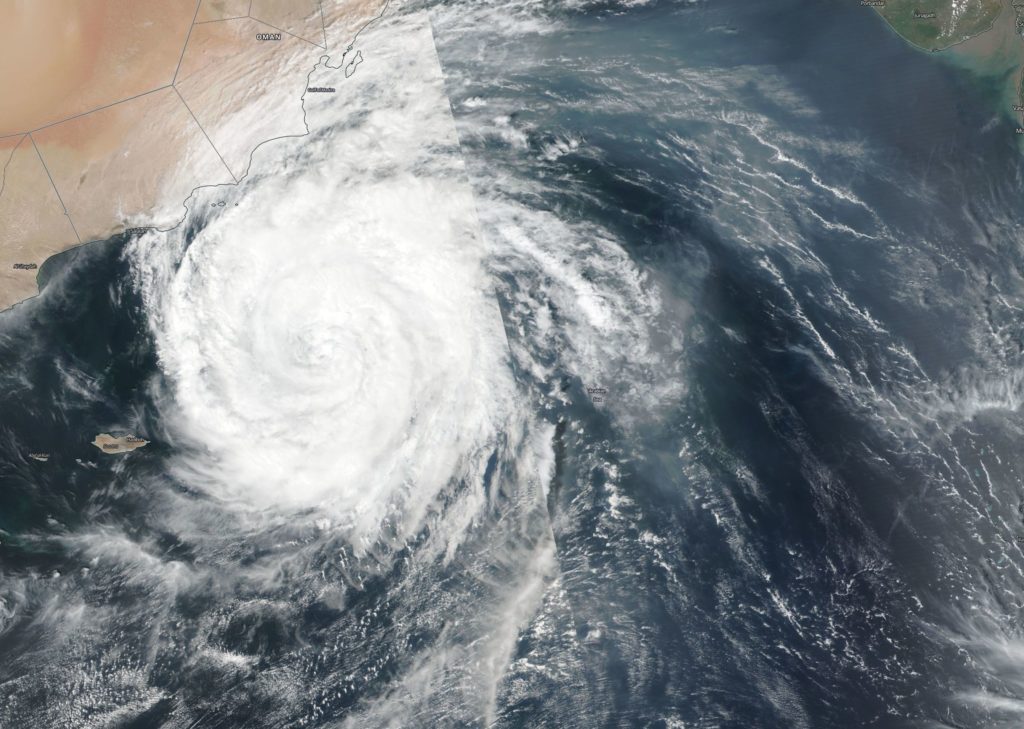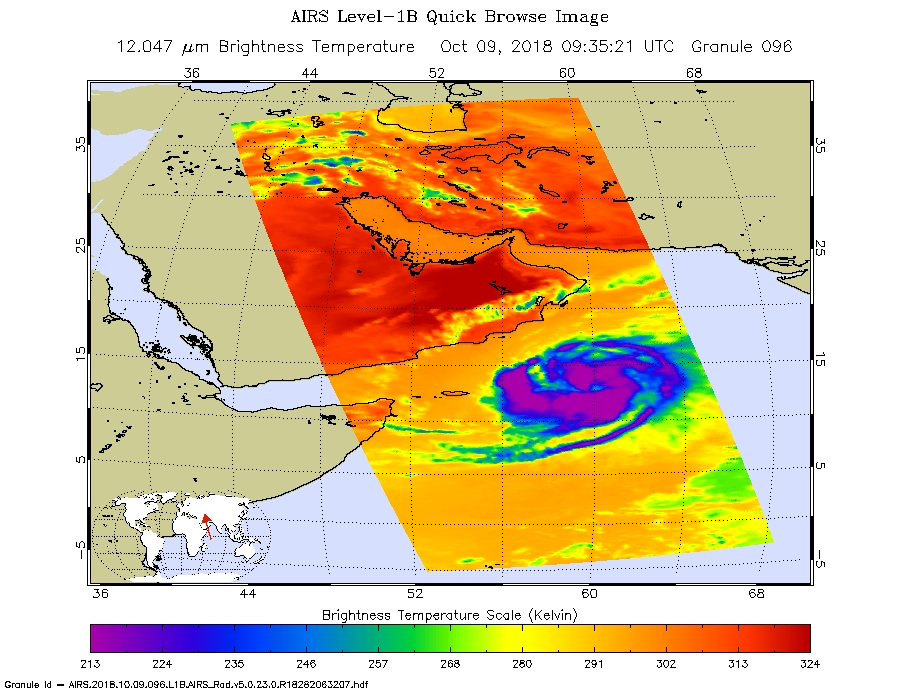Oct. 15, 2018 – NASA Finds Remnants of Tropical Cyclone Luban Near Yemen/Oman Border
Tropical Cyclone Luban made landfall in northern Yemen and imagery from NASA-NOAA’s Suomi NPP satellite confirmed that the low pressure area has continued to linger near the border of Yemen and Oman.

On Oct. 14, Tropical Cyclone Luban made landfall in Yemen near the border with Oman. The storm made landfall between Mukalla and Al Ghaidahnear bringing heavy rainfall and causing flooding and power outages in the eastern city of Ghaida. According to the Oman Observer, the Salalah Airport reported 11mm rainfall while other areas reported much more. Sadah received 70.8 mm of rain and Dalkhout received 89.0 mm.
On Oct. 15, NASA-NOAA’s Suomi NPP satellite passed over the Northern Indian Ocean and the Visible Infrared Imaging Radiometer Suite (VIIRS) instrument provided a visible image the remnant clouds associated with former Tropical Cyclone Luban. Luban’s clouds lingered along the border or Yemen and Oman and into the Northern Indian Ocean.
The meteorological office in Yemen reported that seas would continue to be rough on Oct. 15.




